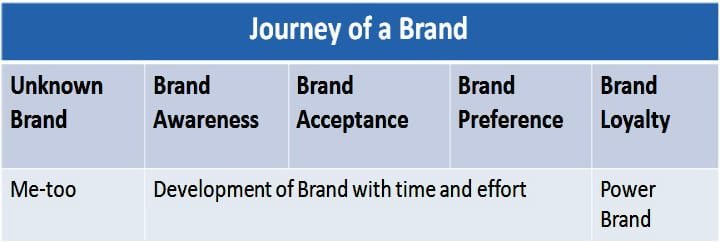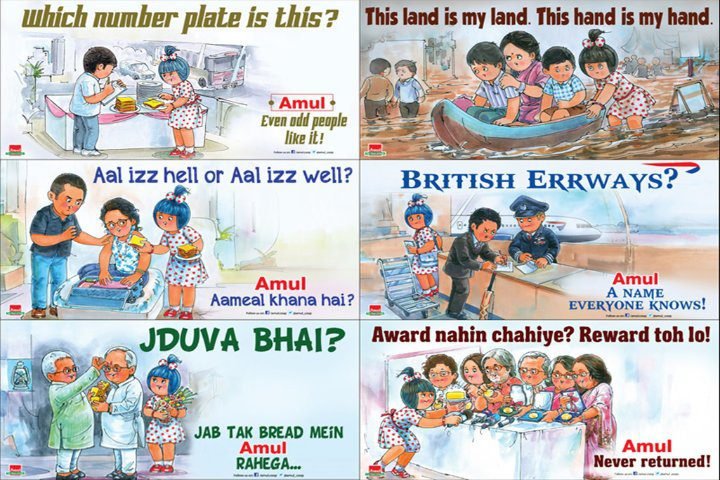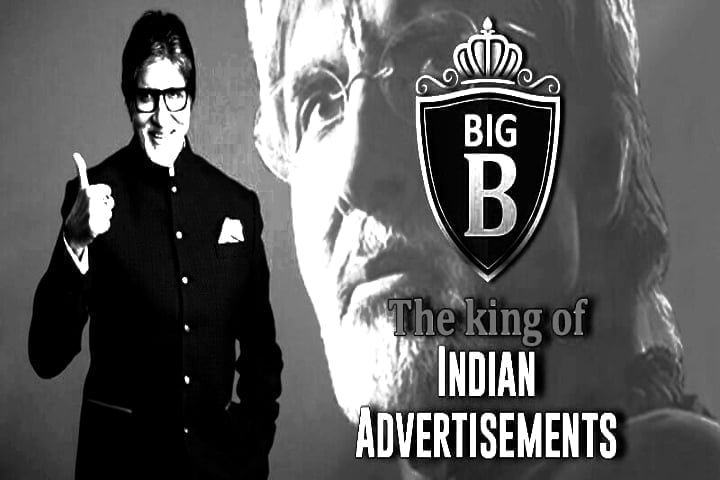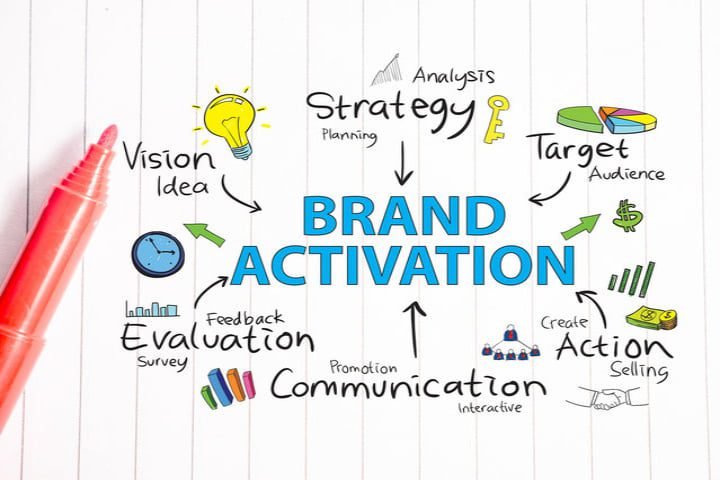Fundamentals of Branding
How can someone make their business or product stand out in a globalized marketplace with many choices that include goods and services worldwide? Understanding the fundamentals of branding is an essential idea that holds the key to finding an answer.
In This Article
A brand is a need in a post-industrialized society. With industrialization and mass production, products made in one part of the world are available to sell in another part. To differentiate between two products, ‘brand’ became the means of personalization.
People identify the makers through the brand and put faith in their product. Across the world, people put faith in Sony, Honda, Nike, Singapore Airlines, etc.
A brand is a proprietary, visual, emotional, rational, and cultural image we associate with a company or a product.
Branding is about building positive awareness and recognition. Think of it as the face and personality of your business.

Brands and their Associated Perception
- Volvo – Safety
- Nike – Michael Jordan or, “Just do it”
- IBM – Big Blue
- Tata – Reliable
- Godrej – Homely, Comfortable
These associations are not accidental. They’re the result of a well-crafted branding strategy. Each of these brands has consciously built and maintained a specific image in the minds of their consumers.
Branding and Marketing
Branding is believed to be the most sustainable marketing tool. While marketing is about actively promoting a product or service, branding is a more holistic and strategic approach.
Branding is quite different and much more than fancy logos, clever slogans, and other such items. Branding is about:
- Adding emotion and trust to the product and service simplifies the customer’s choice.
- Creating a Relationship between the brand and customers to ensure customer loyalty
- Creating an aspirational lifestyle based on this relationship
- Extending the relationship to other products and services
- Charging a premium price for products and services based on a combination of emotions, relationships, lifestyle, and values. E.g., Apple’s iPhone
Differences Between Branding and Marketing
Branding is strategic. Marketing is tactical. Branding is pull. Marketing is push.
Marketing may contribute to a brand, but the brand is more significant than any marketing effort.
Marketing is actively promoting a product or service. It’s a push tactic. It’s pushing out a message to get sales results.
Branding is not a push but a pull. Branding is the expression of the essential truth or value of an organization, product, or service. The communication of characteristics, values, and attributes clarifies what this particular brand is and is not.
A brand will help encourage someone to buy a product, and it directly supports whatever sales or marketing activities are in play, but the brand does not explicitly say “buy me.”Instead, it says,
“This is what I am. This is why I exist. If you agree, if you like me, you can buy me, support me, and recommend me to your friends.”
Good Product vs Need of Branding
It is argued that if a good product is developed, it will sell by itself. However, brand professionals consider it just the beginning of the success story.
A carefully developed brand strategy has to be in place to enable a company to transform its products and services into powerful brands, create new brands for its target markets, and position the brand strongly in the competitive marketplace.
A brand is a company’s most important and enduring economic asset.
Brands are dynamic entities, especially in the era of social media, where consumers have a significant influence.
Journey of a Brand
Building a brand is a journey that takes time and effort. It’s not just about creating a logo and a catchy slogan. It’s about nurturing a consistent identity and reputation for a business.
A brand is a name, design, symbol, or any other feature that identifies one seller’s good or service as distinct from those of other sellers.”
It takes years of dedicated effort to build and then sustain the brand.
Here’s a glimpse of the brand journey from a me-too product to a power brand:

Brand Planning
A brand is everything that helps someone build a positive or negative image of a company. It conveys the belief and what an organization stands for.
It includes the logo, tagline, appearance, brochure, website, how an organization treats their employees, suppliers, and customers, what they promise and deliver, and ultimately, what people feel and say about it, not what an organization claims about themselves.
It is important to communicate an organization’s value proposition to customers clearly.
Branding begins with an understanding of four key elements:
- Primary Target Customers: Who are your ideal customers? What are their needs, preferences, and pain points?
- Competitors: What sets you apart from your competitors? How can you distinguish yourself in a crowded market?
- Product/Service Mix: What do you offer, and how does it align with your customers’ needs and desires?
- Advantages: What unique advantages or values can you provide that others cannot?
The Power of Storytelling in Branding
One of the most potent tools in branding is storytelling. A brand’s story is what creates an emotional connection with the audience. It’s what makes a brand memorable and relatable. When people can connect with a brand on a personal level, it becomes more than just a product or service; it becomes a part of their lives.
Take, for example, the brand “Amul.” Amul is not just a dairy company; it’s a story of empowerment, a cooperative movement, and a symbol of self-reliance. The brand’s mascot, the utterly buttery and delicious Amul girl, has been a part of Indian households for generations. Through clever and witty ad campaigns, Amul has embedded itself in the hearts of consumers, making it a household name and a beloved brand.

The Importance of Consistency
Consistency is key in branding. A brand should speak with one voice across all platforms, from websites to social media accounts to physical stores (if any). Consistency in branding creates a sense of reliability and trust. Consumers should recognize a brand instantly, regardless of where they encounter it.
For instance, the Indian telecom giant Jio has maintained a consistent brand image since its inception. Whether it’s their distinctive logo, vibrant colors, or their commitment to providing affordable and high-speed internet, Jio’s branding has been persistent. This consistency has contributed significantly to its success and recognition.

Building Brand Loyalty
Brand loyalty is the most important thing for any business. It’s what turns occasional customers into loyal fans for life. To build brand loyalty, it is essential to go beyond just selling a product and create an emotional connection with the customers.
One brand that excels at building brand loyalty is “Titan.” Titan offers a range of products, including watches and jewellery. Its commitment to quality, design, and customer satisfaction sets Titan apart. The brand has built trust over the years, and when people think of Titan, they think of a brand they can rely on. This trust has created a loyal customer base that keeps returning for more.

Adapting to Changing Times
Brands must be adaptable in today’s fast-paced world, where trends and customer tastes change quickly. It is essential to change to stay relevant and maintain the brand’s value. As an example, think about the brand “Zomato.” Launched initially as a restaurant review and discovery platform, Zomato recognized the changing landscape of the food industry.

To keep up, Zomato added food delivery and table bookings to its list of services. The brand was able to meet changing customer needs thanks to this change in strategy. Zomato has become a significant player in India’s food and restaurant business by being able to change direction and stay ahead of the curve.
The Role of Brand Ambassadors
Brand ambassadors play a crucial role in amplifying a brand’s message and values. They personify the brand and create a personal connection with the audience. One Indian brand that has masterfully employed brand ambassadors is “Amitabh Bachchan” for various products, from FMCG to automobiles.
Some reports suggest that Amitabh Bachchan charges more than 5 to 8 crore rupees for a commercial advertisement. The actor has worked with many brands and government campaigns, including Swacch Bharat Abhiyan, Polio Vaccine, Times of India, Tata Sky, Kalyan Jeweller, Navratna Oil, Gujarat Tourism, Mankind, Reid & Taylor, upGrad, JustDial, ICICI Prudential Life, Flipkart, TVS Jupiter, Cadbury Dairy Milk, Cycle Agarbathi, First Cry, Tanishq, and more.

The legendary actor’s association with brands brings trust and credibility. His iconic status and people’s emotional connection with him make him a compelling choice for brand endorsements. His long-standing partnership with these brands has contributed to their success.
Embracing Digital Branding
The solid online presence of a brand is highly significant in this modern age. Websites, social media, and e-commerce platforms are essential to branding. It’s where people interact with your business, talk about their experiences and form opinions. Indian companies like “Myntra” and “Flipkart” have used digital branding to reach many people.

Myntra, an e-commerce platform for fashion, has harnessed the power of digital marketing to create a personalized shopping experience. Their digital branding includes engaging social media campaigns, a user-friendly app, and a visually appealing website. This approach has allowed them to successfully tap into India’s growing online shopping market.
Measuring Brand Success
Measuring brand success is essential to evaluating strategies and making necessary adjustments. Key performance indicators (KPIs) can help gauge the impact of branding initiatives. Common KPIs include:
- Brand Awareness: This measures how recognizable a brand is among the target audience.
- Customer Loyalty: Tracking customer retention and repeat business is crucial to brand success.
- Online Engagement: Analyzing metrics like website traffic, social media interactions, and click-through rates can provide insights into a brand’s digital presence.
- Market Share: Assessing a brand’s market share compared to competitors can indicate the brand’s strength.
- Customer Feedback: Monitoring customer reviews, feedback, and sentiments can reveal how a brand is perceived.
- Sales and Revenue: Increasing sales and revenue is a tangible measure of branding success.
Case Study: The Rise of Patanjali
One remarkable example of branding success in India is “Patanjali.” Founded by Baba Ramdev, Patanjali burst onto the scene with a unique selling proposition: natural and ayurvedic products. What began as a small initiative to promote traditional Indian wellness practices quickly transformed into a brand powerhouse.

Patanjali’s success can be attributed to several branding elements:
- Unique Value Proposition: Patanjali’s focus on natural and ayurvedic products tapped into the growing wellness and health-conscious trend. This unique value proposition sets it apart from other FMCG companies.
- Cultural Relevance: By emphasizing Indian culture and traditions, Patanjali connected with consumers on a cultural level. The brand’s association with yoga guru Baba Ramdev further reinforced this cultural connection.
- Affordability: Patanjali’s products were natural and affordable, making them accessible to a broader demographic.
- Expansive Product Line: The brand diversified its offerings from health supplements to personal care products and food items. This diversification helped establish Patanjali as a holistic wellness brand.
- Nationalism: Patanjali leveraged a sense of nationalism by positioning its products as ‘Swadeshi’ or indigenous. This struck a chord with consumers, who were increasingly looking for Indian alternatives to international brands.
Patanjali’s rapid rise to prominence illustrates the power of branding to capture the hearts and minds of consumers. It demonstrates how a well-defined brand, backed by a unique value proposition and cultural relevance, can disrupt established market dynamics.
The Future of Branding
As we move into the 21st century, the fundamentals of branding remain relevant, but they are evolving to adapt to a changing landscape. Here are some trends shaping the future of branding:
- Personalization: Brands increasingly focus on personalizing their offerings to cater to individual preferences. Data-driven insights play a crucial role in tailoring products and services to customers’ unique needs.
- Sustainability: Eco-conscious consumers are driving brands to adopt sustainable practices. Brands that prioritize environmental and social responsibility are gaining a competitive edge.
- Visual Storytelling: In the age of social media and short attention spans, visual storytelling through images and videos is becoming more critical in conveying a brand’s message.
- Voice Search and AI: With the rise of voice-activated devices and artificial intelligence, brands must consider how their identities and messages are adapted to voice-based interactions.
- Community Engagement: Brands are focusing on building communities and fostering brand advocacy. Social media platforms are powerful tools for connecting with and mobilizing communities of loyal customers.
- Virtual and Augmented Reality: These technologies provide new avenues for immersive branding experiences, allowing consumers to interact with products and services in novel ways.
Branding is a dynamic and ever-evolving process. To stand out in a crowded marketplace, businesses must understand the fundamentals of branding and adapt to the changing demands of consumers. Whether an established brand or a startup, the power of branding can be harnessed to create a lasting impression and connect with the audience on a deep, emotional level.
As Tom Peters, a Business Writer, wisely said in “The Encyclopedia of Brands and Branding”,
“If you want to stand out in an insanely crowded marketplace, branding is the only way you are going to do it.”





